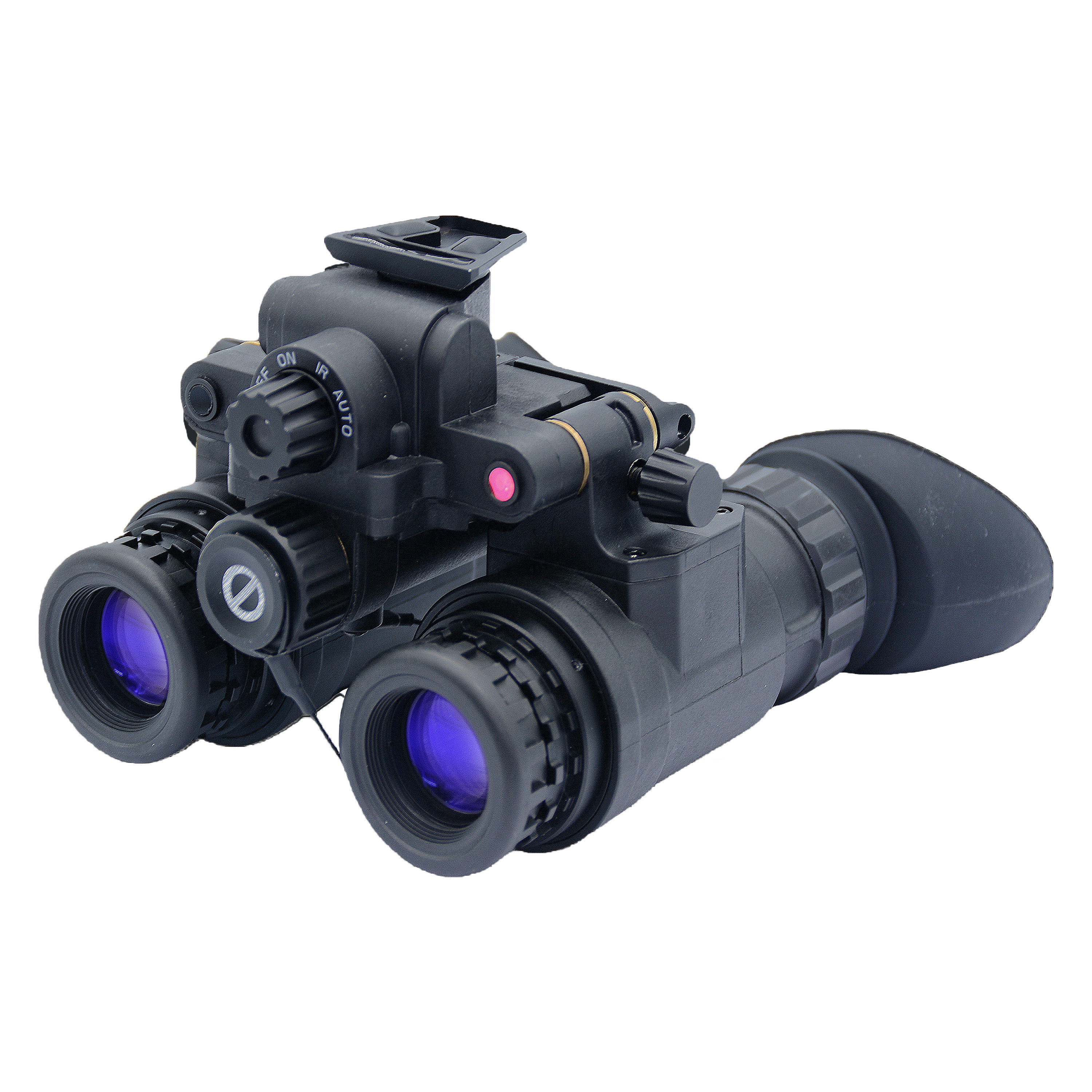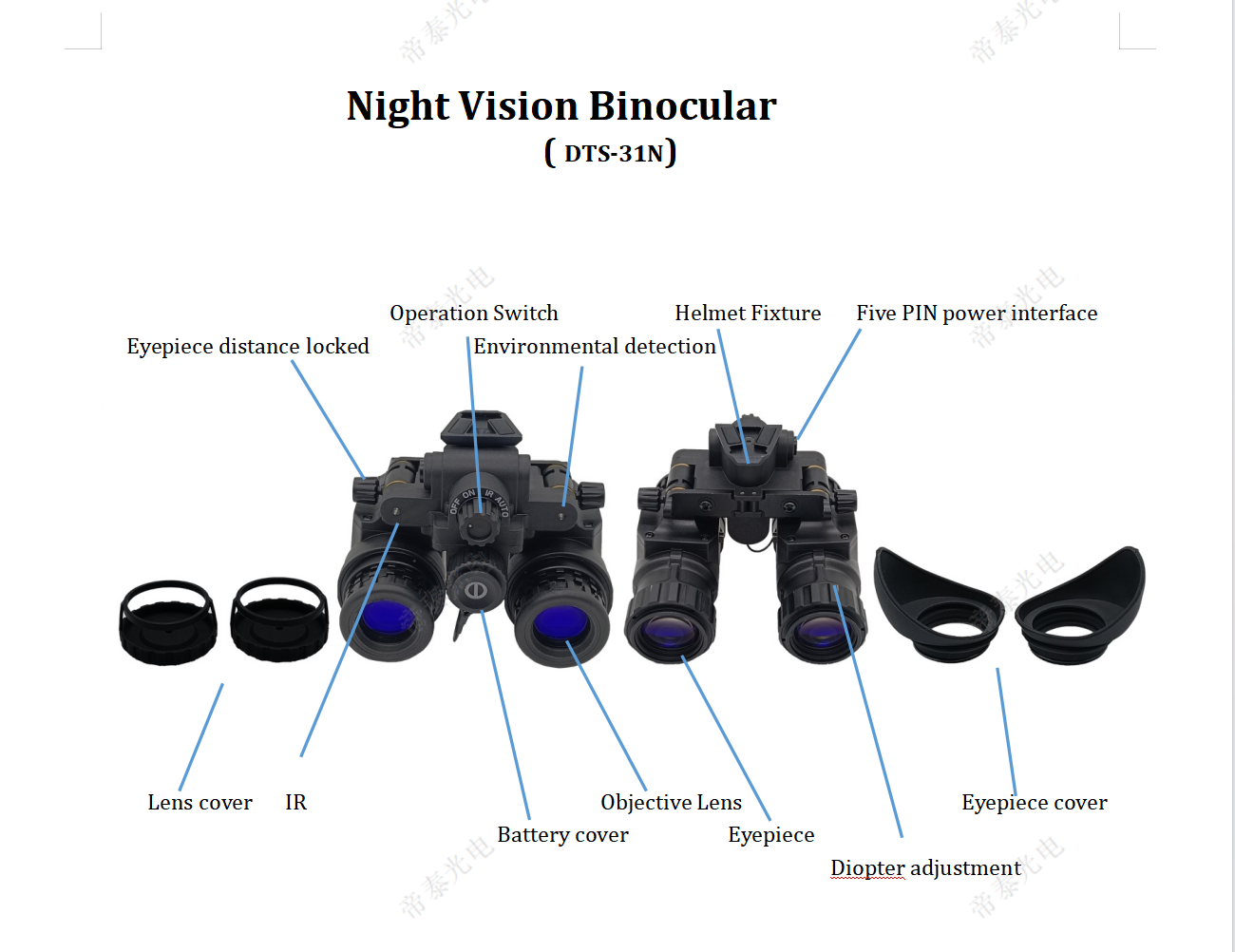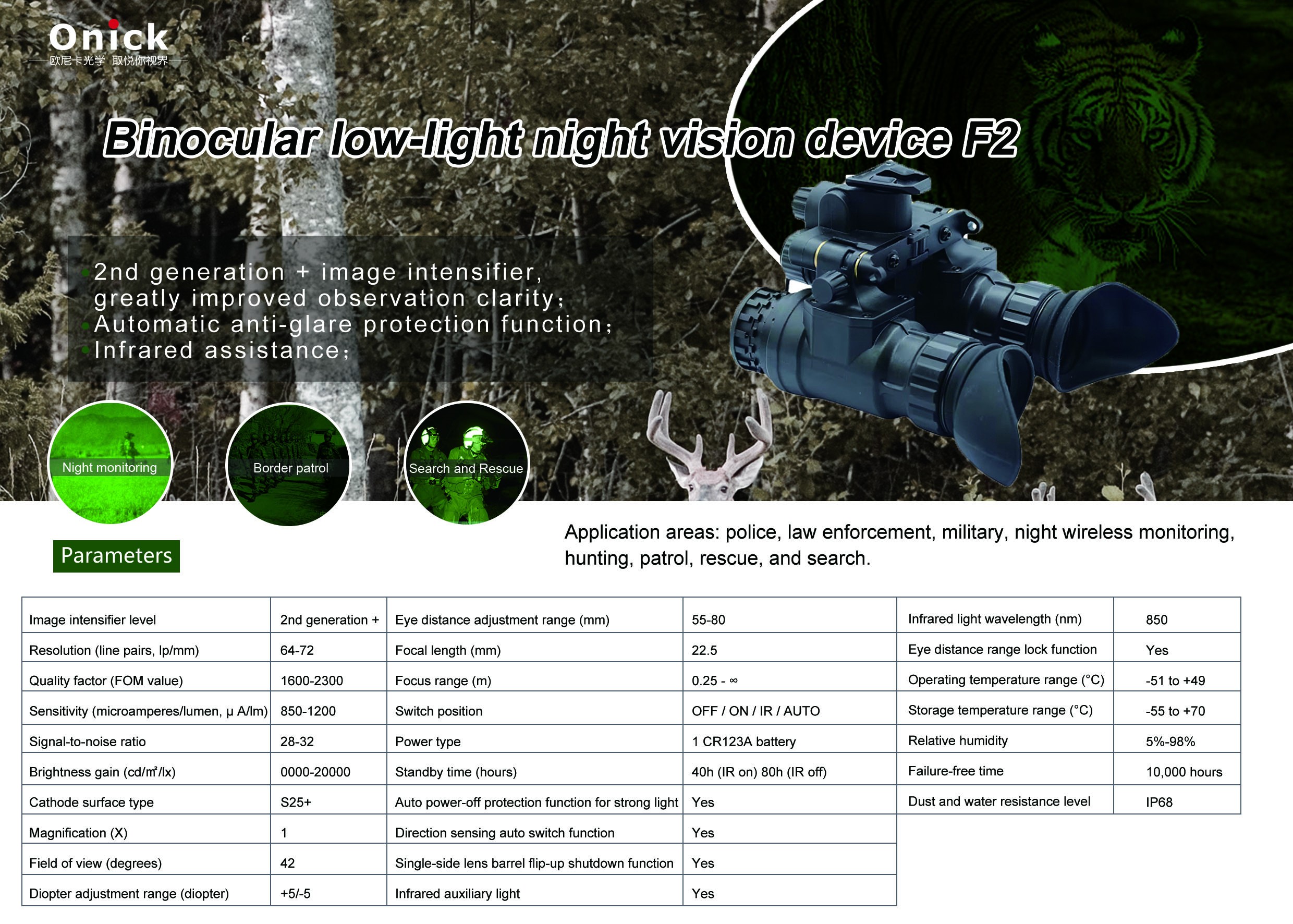Night vision goggles, also known as night vision glasses, night vision telescopes, and infrared telescopes, are instruments for observing in total darkness or dim light at night. They were first used in the military. Later, they were widely used in criminal investigation, security prevention, forest fire prevention, power and communication line patrol, construction sites, farms, farm care, and even tourism. After half a century of development, night vision goggles can be roughly divided into several types:
1. Low-light night vision technology, also known as image enhancement technology, is a photoelectric imaging technology that uses night vision goggles with image intensifier tubes to enhance the target image under weak light for observation. Low-light night vision goggles are currently the most produced and widely used night vision equipment abroad, and can be divided into direct observation and indirect observation.
2. Infrared night vision technology is divided into active and passive types. Active infrared night vision technology is a night vision technology that implements observation by actively irradiating and using the infrared light reflected by the target from the infrared source. The corresponding equipment is an active infrared night vision goggle. Although active infrared night vision technology has the characteristics of clear imaging and simple production, it also has a fatal weakness: on the battlefield, the infrared light of the infrared light can be detected by the enemy's infrared detection device. This weakness undoubtedly declares the fate of active infrared night vision technology to be eliminated. Passive infrared night vision technology is an infrared technology that uses the infrared radiation emitted by the target itself to achieve observation. Simply put, it is to form an image based on different temperatures. The resolution is very low, but it has its special uses.

3. Some night vision devices have improved the semiconductor material of the photocathode, making it sensitive to both low light and infrared. The infrared night vision device and the low light night vision device are unified in one instrument. It functions as a low light night vision device on clear nights, and emits infrared rays on rainy and foggy nights to function as an active infrared night vision device, and the working distance is farther than that of a simple passive low light night vision device.
Questions and answers about night vision devices:
1. What is the difference between night vision devices and telescopes?
A: A telescope is an optical instrument that directly uses a lens to magnify the object's viewing angle on the retina. It does not use power and cannot be viewed in total darkness or dim light. A night vision device is an instrument that uses the principle of image enhancement or infrared imaging to observe. Its clarity is not as good as a telescope, but it is suitable for viewing in total darkness or starlight and moonlight.

2. Can night vision devices be used during the day?
A: No, and there is no need. Do not open the lens cover and power supply at the same time during the day or in strong light, otherwise it will cause damage to the core components of the night vision device over time.
3. Can infrared rays be seen directly with the naked eye?
A: Infrared rays are outside the visible light band and cannot be seen directly with the naked eye, so it doesn't matter what color it is. Can night vision devices distinguish colors?
A: No. The image of a night vision device is generally yellow-green and cannot reflect the true color of the object.

4. Why are active night vision devices suitable for civilian use?
A: A night vision device with active function has an infrared lamp that emits a beam of infrared light to illuminate the scene. Therefore, the imaging is clear, but the actively emitted infrared light can be easily detected by the enemy's instruments and expose the target, so it is eliminated in the military. However, there is no exposure problem when used for civilian use, so the disadvantage becomes an advantage, and coupled with the low price, night vision devices with active infrared function are suitable for civilian use.

